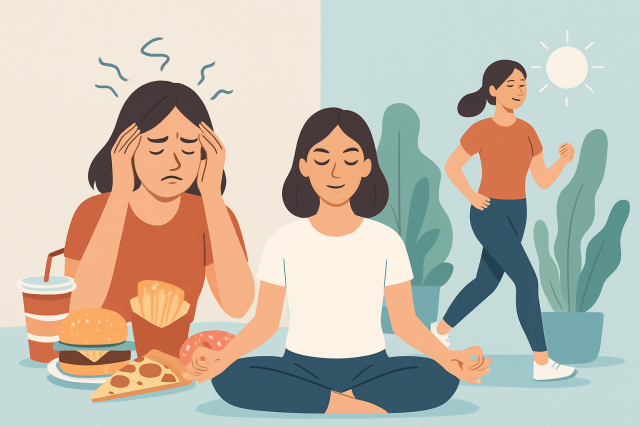
The Power of Believing in Yourself During Tough Times
Learn why believing in yourself is essential during hardship and explore a comprehensive guide to bu...
Radical acceptance is a cornerstone skill in Dialectical Behavior Therapy that helps individuals handle those intense emotions and challenging realities life likes to throw our way. Instead of beating your head against the wall by resisting or denying what’s happening, radical acceptance encourages truly embracing situations as they come.
Dialectical Behavior Therapy (DBT) was developed to help people navigate those stormy seas of intense emotional distress and find healthier ways to cope. At the heart of DBT is radical acceptance which basically teaches us that suffering tends to snowball when we stubbornly fight against reality. Instead of dodging or denying what’s really going on, radical acceptance invites us to acknowledge things just as they are. Over time, this approach can ease the ache and strengthen emotional resilience.
Radical acceptance means fully acknowledging reality just as it is without judgment or denial and without trying to twist it into something else. It does not require you to like or even agree with what is happening. Instead, it is about accepting the truth of the situation without becoming emotionally entangled.
Many people tend to mistake radical acceptance for simply throwing in the towel or turning a blind eye to harmful behavior. Radical acceptance is about seeing things as they are in the here and now without slapping on a judgmental label. That doesn’t mean you’re giving a thumbs-up to injustice or packing it in when it comes to making things better. On the contrary it carves out a bit of emotional breathing room and lets you step back to make clearer, more thoughtful choices.
Sometimes life throws curveballs that really knock the wind out of your sails. Radical acceptance is one of those surprisingly powerful tools that can help us stay afloat when things get tough. It’s not about giving up or throwing in the towel—it’s more like leaning in and saying, "Okay, this is happening, so let’s figure out how to roll with it." Over time, embracing this mindset can turn down the volume on suffering and bring a little peace of mind, even when the world feels like it’s spinning a bit too fast.
Trying to resist reality—to deny or wrestle with the facts—often makes painful feelings stick around longer and drags out emotional distress. When we finally lean into things as they truly are instead of clinging to how we wish they would be, it feels like a weight lifts and the tension inside starts to ease.
"Radical acceptance is like walking into a room brimming with calm instead of locking yourself away in a tiny cell of pain. It doesn’t mean you’re throwing a party for the situation—just that you’ve finally stopped wrestling with the walls closing in on you."
Radical acceptance is a handy skill worth cultivating through steady and intentional practice. By taking certain steps you gently nudge your brain to face reality without judgment, which softens emotional resistance.
Common challenges like denial or avoidance often throw a wrench in the works when it comes to radical acceptance. When these feelings bubble up, gently remind yourself that acceptance is not about throwing in the towel. It is the very first step toward easing your suffering. Patience with yourself is key here.
Radical acceptance comes in handy across all sorts of life’s curveballs and makes tough emotions feel more manageable. Whether you’re grappling with loss, facing health challenges, navigating relationship ups and downs or adjusting to sudden changes, simply accepting what is can often take the edge off unnecessary pain and open space to cope in healthier and more sustainable ways.
Radical acceptance works best when teamed with other DBT skills like mindfulness, distress tolerance and emotion regulation. Together, these tools form a solid toolkit that helps you come to terms with reality and manage intense emotions while responding with more thoughtfulness.
Mindfulness practice gently nudges you to stay right here and right now while watching your experience unfold without harsh judgment. Distress tolerance skills give you handy tools to manage emotional pain safely like a comforting lifeline when things get tough. Emotion regulation helps you ride out intense feelings that might still pop up even after you have come to terms with reality.
Sticking with radical acceptance is not always a walk in the park, but with a little patience and some savvy tricks, it can become a natural part of your day. Here are some down-to-earth tips to help keep the practice alive and kicking, even when life throws curveballs your way.
Keeping up a practice of radical acceptance takes dedication and gentle nudges along the way. Building habits like journaling or using reflection prompts can help acceptance settle in as a familiar part of your daily routine.

Learn why believing in yourself is essential during hardship and explore a comprehensive guide to bu...

When life gets overwhelming, many turn to food for comfort. Explore the science behind stress eating...

Feeling overwhelmed by anxiety? Learn 5 simple, actionable steps to calm down quickly and regain con...

Discover practical, easy-to-follow techniques to calm anger before it takes control, and build lasti...